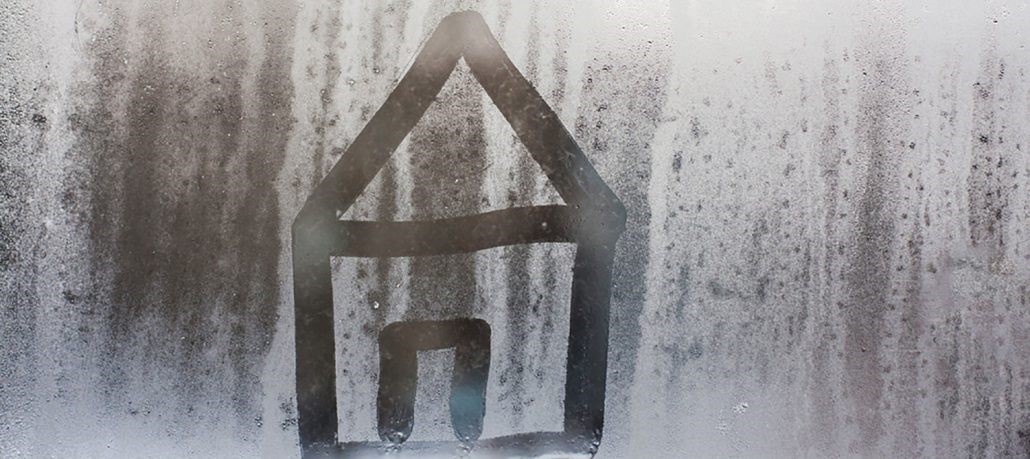
Every year we get calls from a customer or two asking why they have condensation on the outside of their brand-new windows. Their old windows didn’t do this, so the new ones must be defective! Not at all! In fact, the new windows are performing better than ever before. It is not unusual to have condensation on the outside of new energy efficient windows; in fact, it’s perfectly normal. It may seem like a strange phenomenon, but once you understand what’s going on it makes total sense!
Condensation forms on an object when that objects surface temperature goes below the dew point. The dew point is defined as the temperature where the air is 100% saturated with moisture – or where the air is at 100% relative humidity. Some new windows have condensation because the surface of the window is below the dew point. This is NOT a bad thing. What is happening on those windows with the condensation is that the window is performing exactly as designed…It is blocking the heat from inside your home from reaching the outside of your home thus allowing the outside windows to be cooler than the morning dew point.
Low-E glass acts basically like a reflector for heat and energy, and is truly a very thin coating of metal. So, if you have humidity come up against cold metal (like breathing on a cold mirror, or when you get a cold can of soda on a hot day) you’re going to have condensate. Water will bead on the cold surface. For Low-E windows what this means is that the Low-E keeps the glass temperature closer to the outside temperature than the inside temperature. What’s great about that is that it keeps your inside temperature from fluxuating and you have a more constant temp inside your home. This means you don’t run heating or cooling utilities as much.
Why does it do it on some windows and not others? Whether or not a window develops exterior condensation is actually a rather complex bit of environmental and performance issues. For example, you are much less likely to develop condensation on a cloudy night. Any trees or other obstructions close to the windows? Bushes under the windows? Even the length and angle of the soffit or other overhangs can affect the formation of condensation. Operable windows with screens can sometimes only have the condensate on the fixed panel of the window. The half that has the screen is the operable half and can let in a minimal amount of air infiltration; enough to cool the inside glass to a similar temperature of the outside glass.
The condensation on the new windows is a sign that your windows are better insulated than they ever have been. However, some don’t like the look even though it goes away fairly quickly. What can you do? Since we cannot control the outside dew point temperature (or relative humidity), the options for preventing exterior window condensation problems are to warm the inside surface of the window as a way to warm the outside surface. A tiny change in either temperature or humidity might raise or lower the dew point just a little bit and you might see a whole different level of condensation. Even raising the temperature in the room by a few degrees can make a difference. So can using a fan, or just opening the window. Exterior shutters or even shade from trees will lessen the effect.
In summary, condensation occurs when a surface falls below the dew point temperature of the air. The outside glass in an energy efficient window will be closer to the outside temperature, and the inside glass will be closer to the inside temperature. The glass in an inefficient window will be more heavily influenced by both inside and outside temperatures. The condensation or fogging on the outside of a new window is quite common and perfectly normal. At Glass-Rite we use high performance SolarBan 60 & SolarBan 70 Low-E glass and Argon gas in between the two panes to get the best insulation around. This awesome insulation can sometimes be physically seen by exterior condensation. Just remember that this means the window is doing its job. To learn more, or to see how we make our glass units, please stop by our shop and showroom and we’d be happy to show you around! Please contact us for a free estimate on new windows or if you have any questions.

